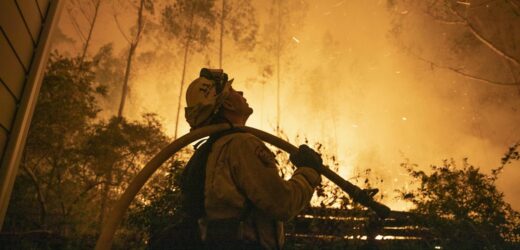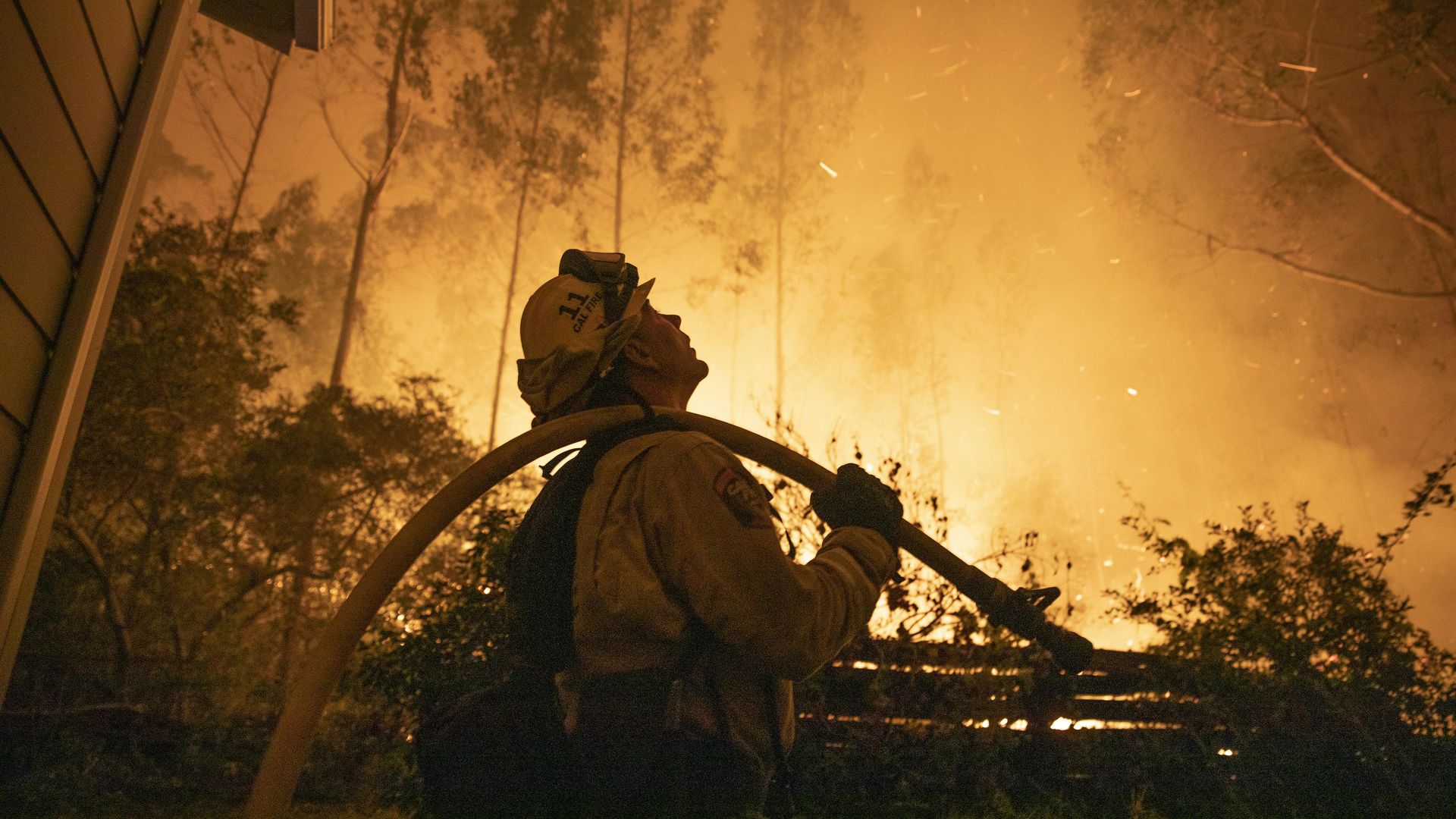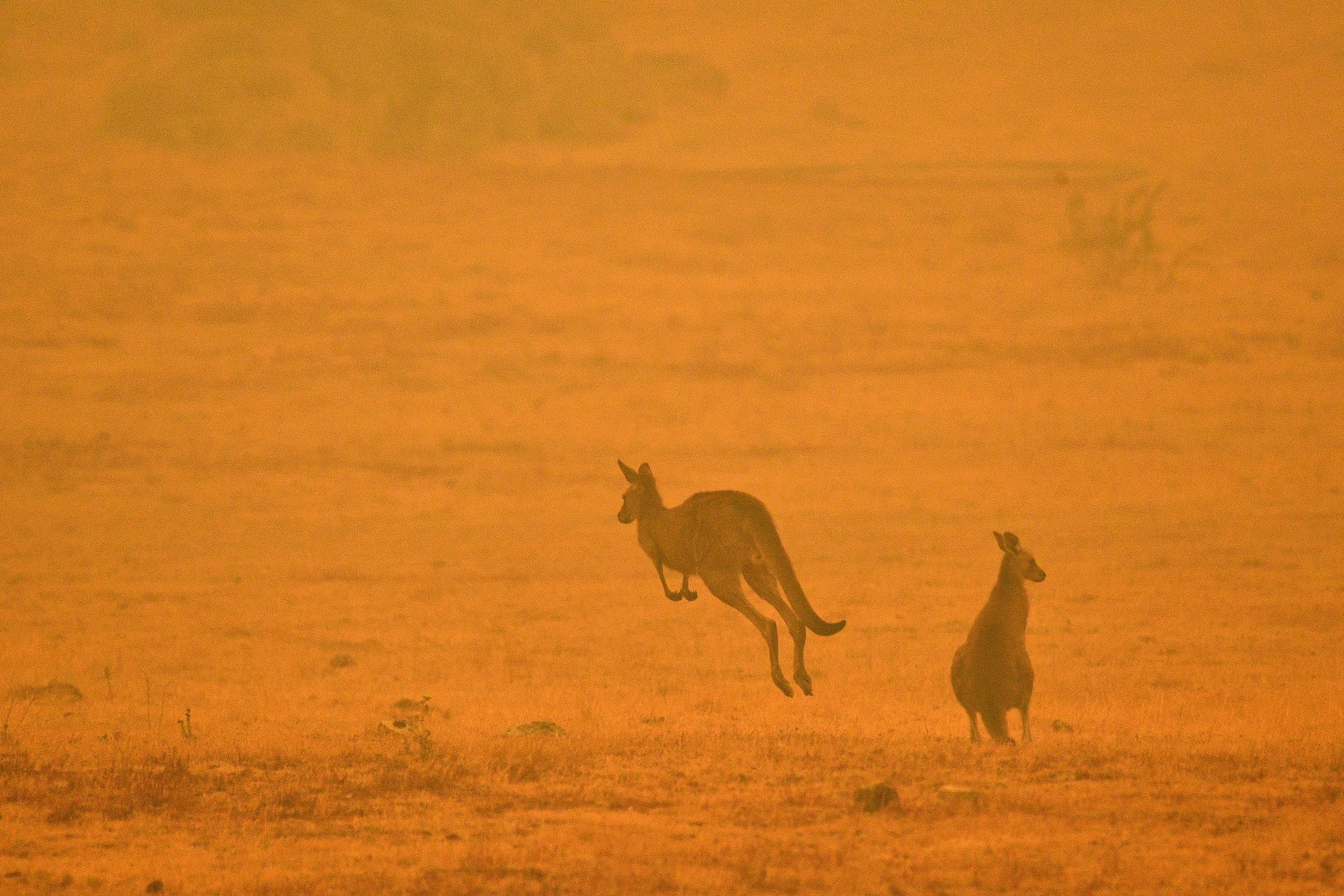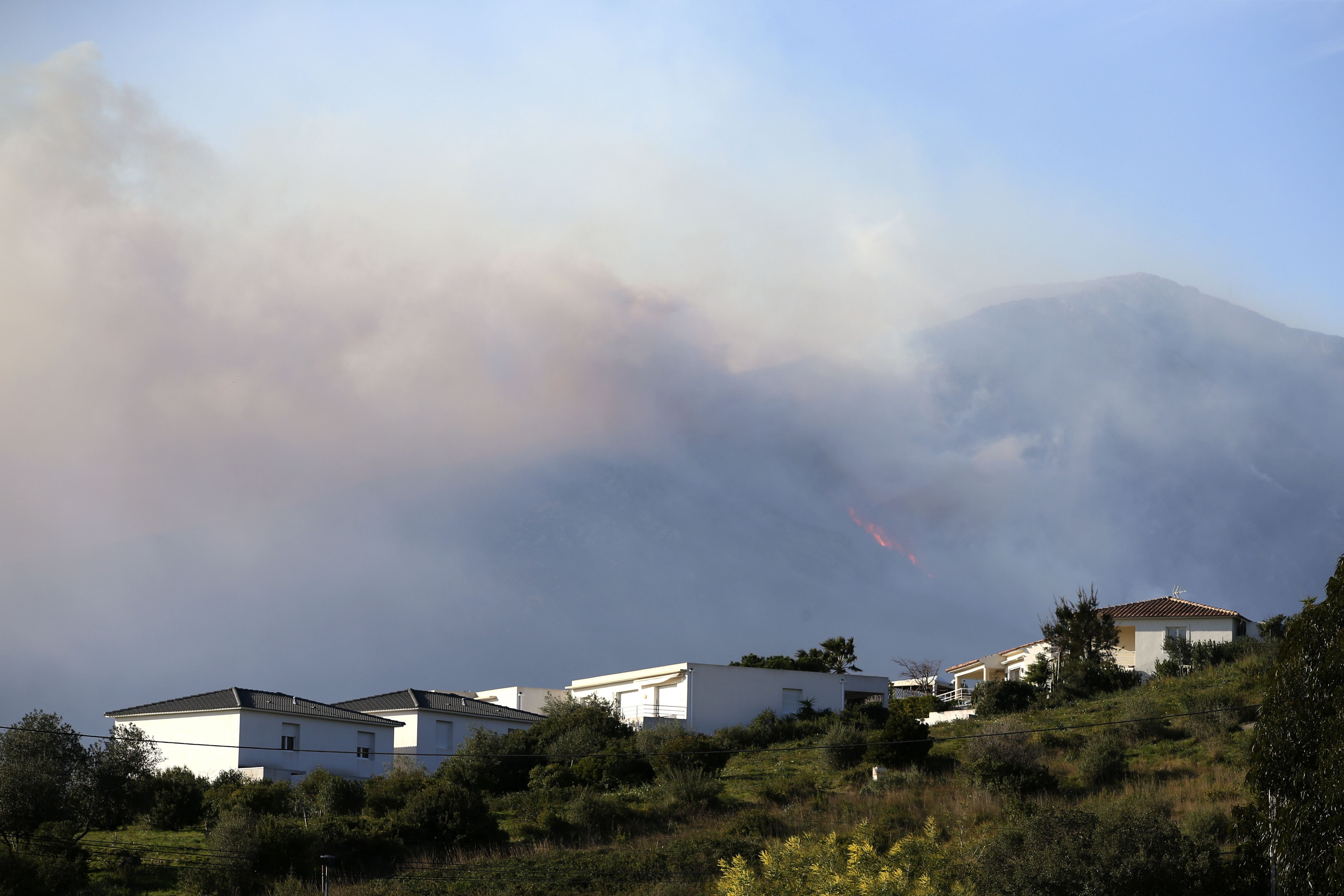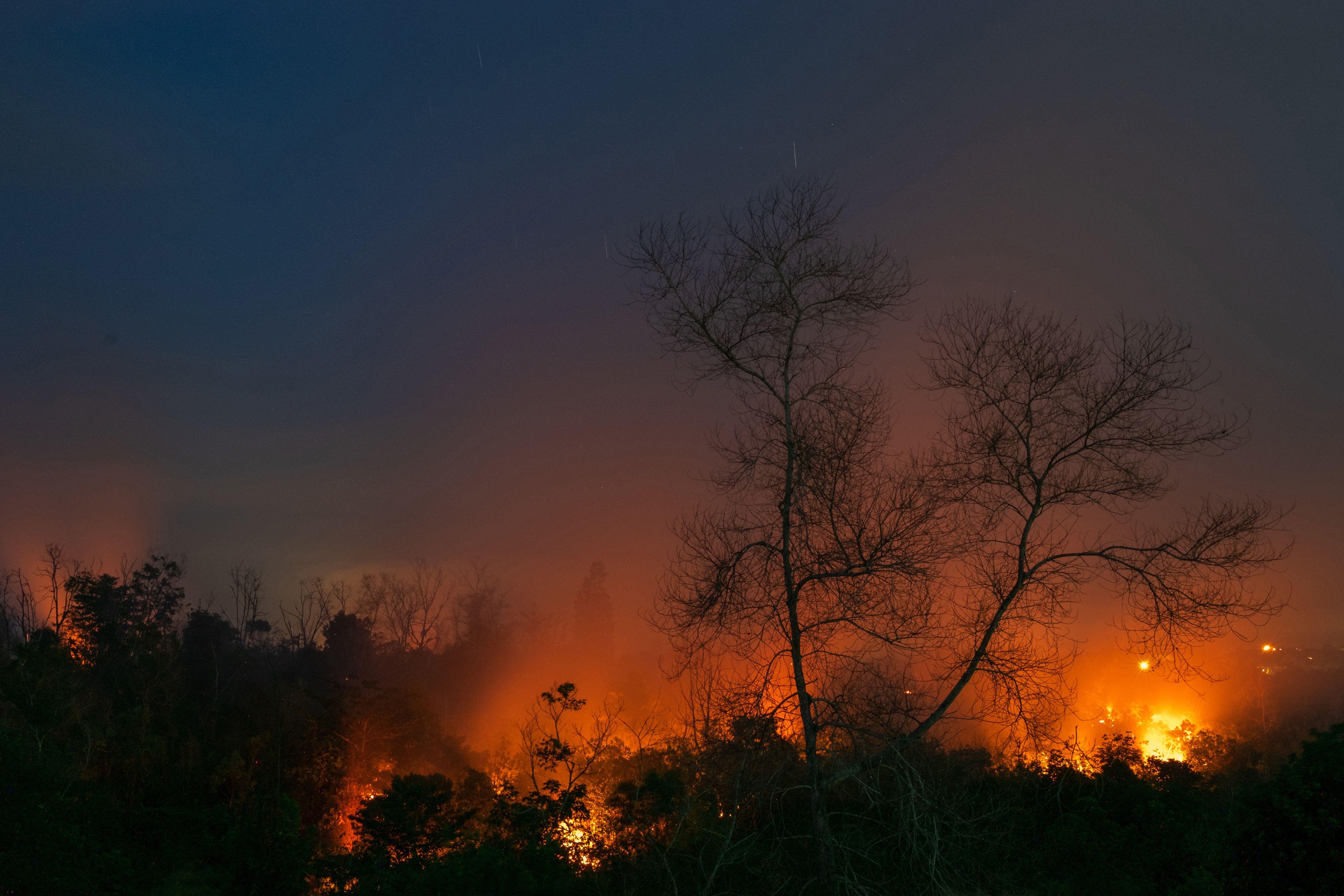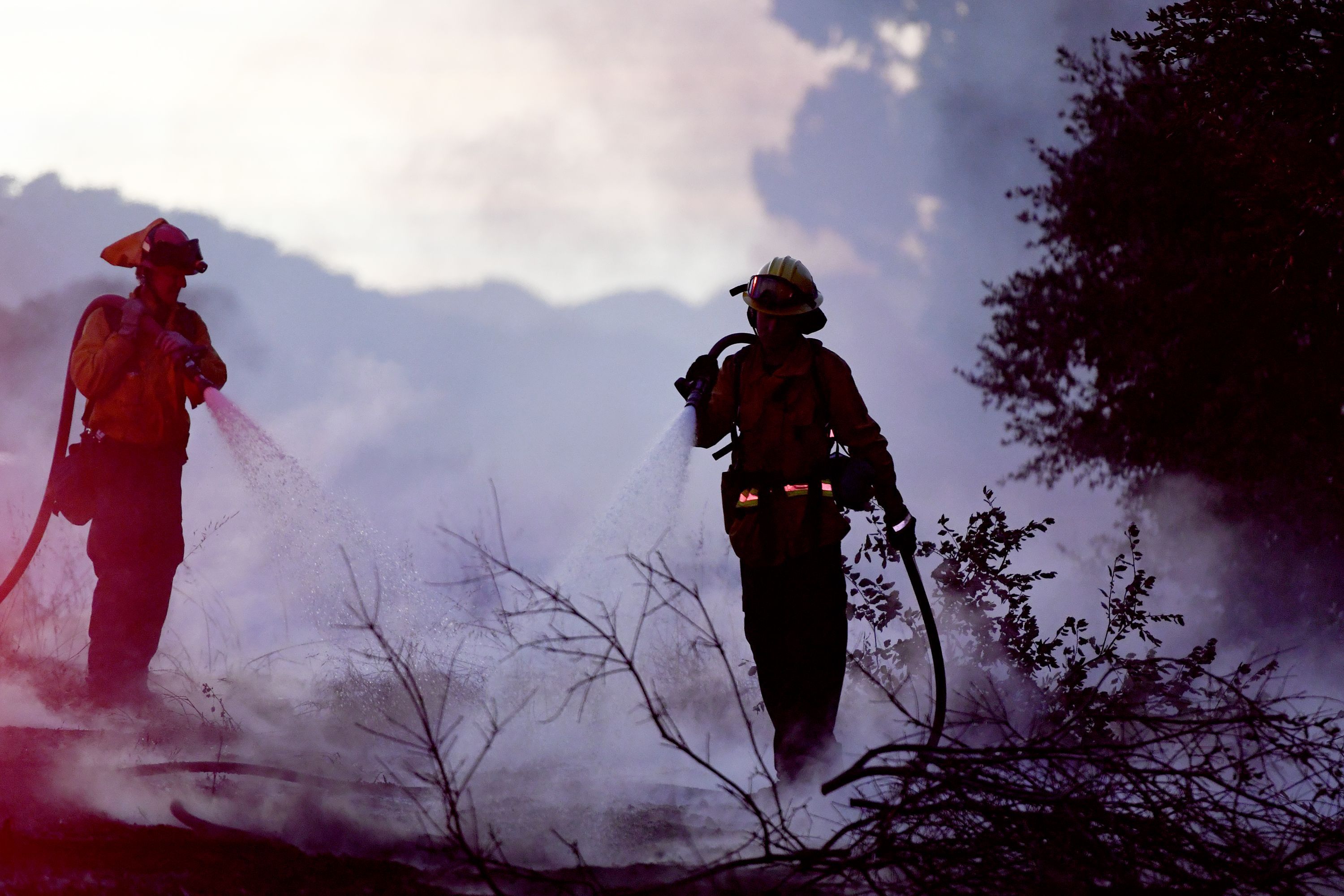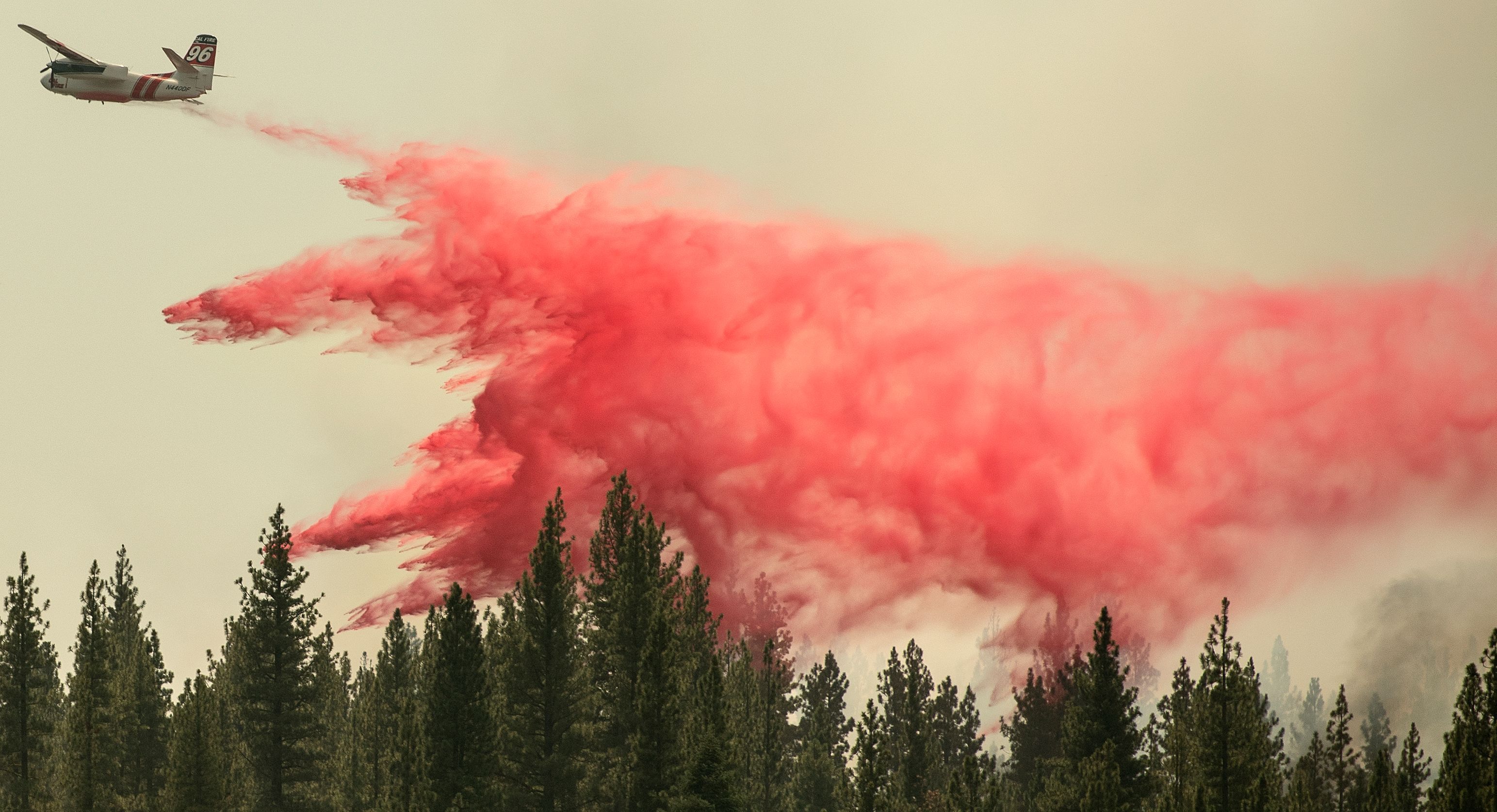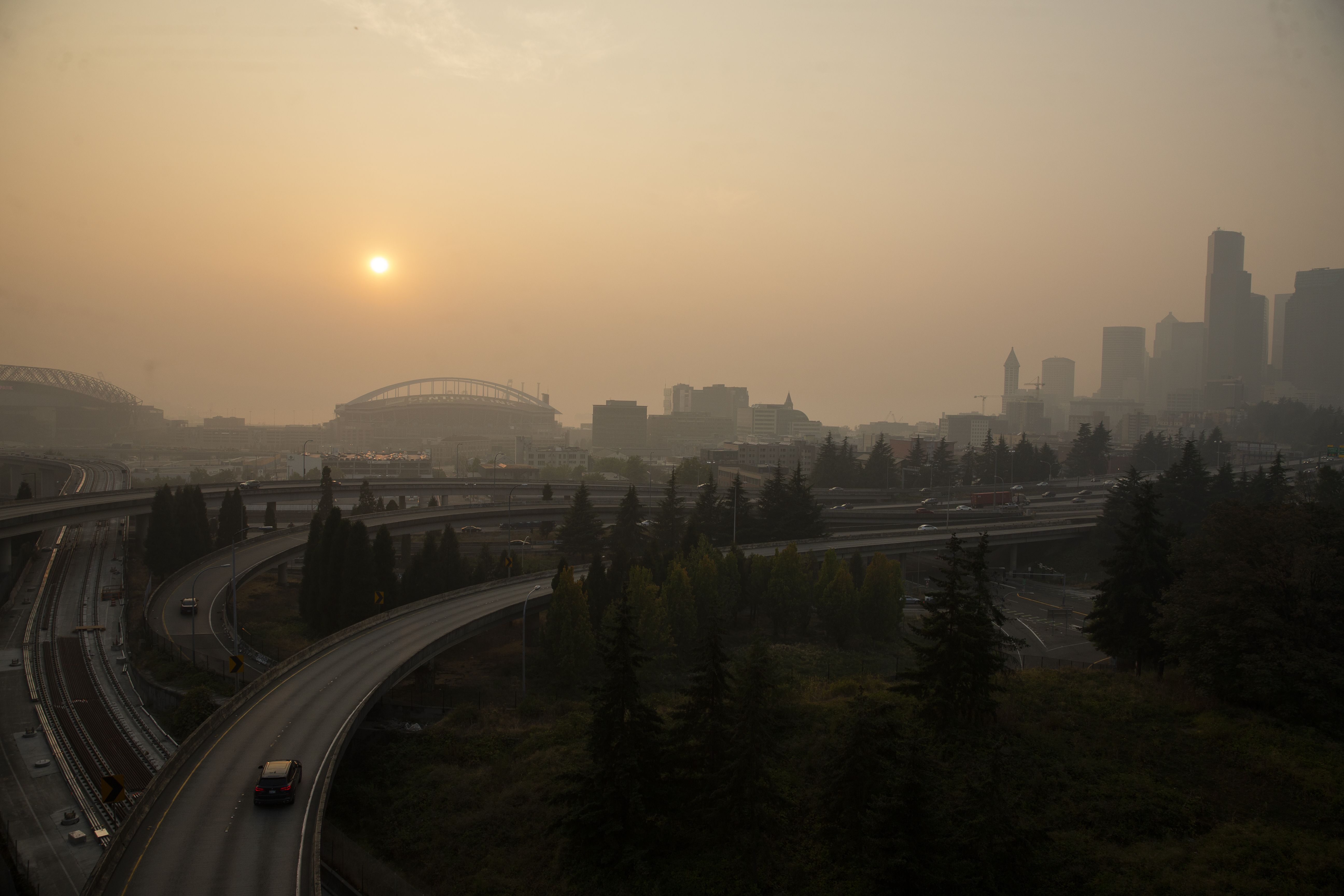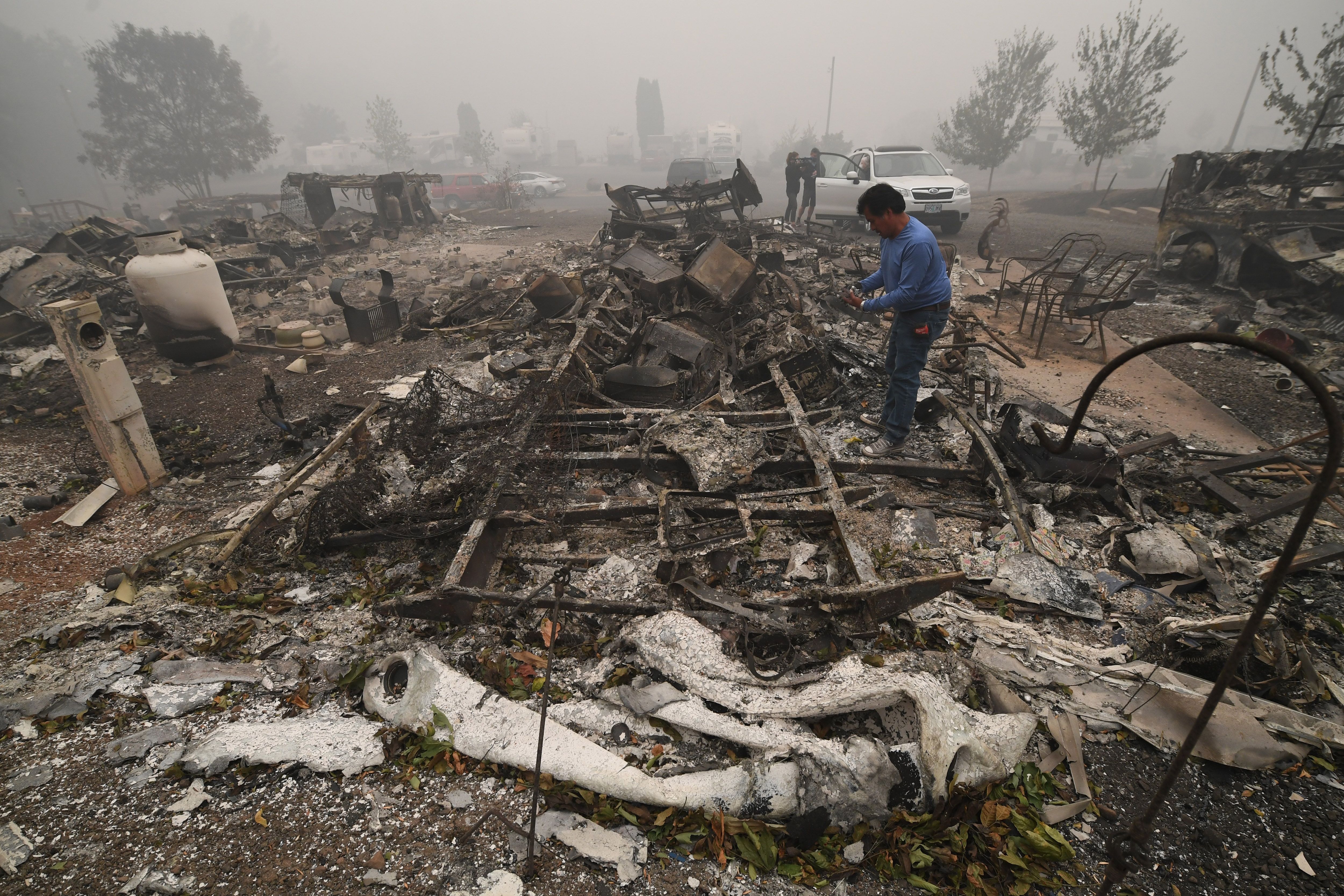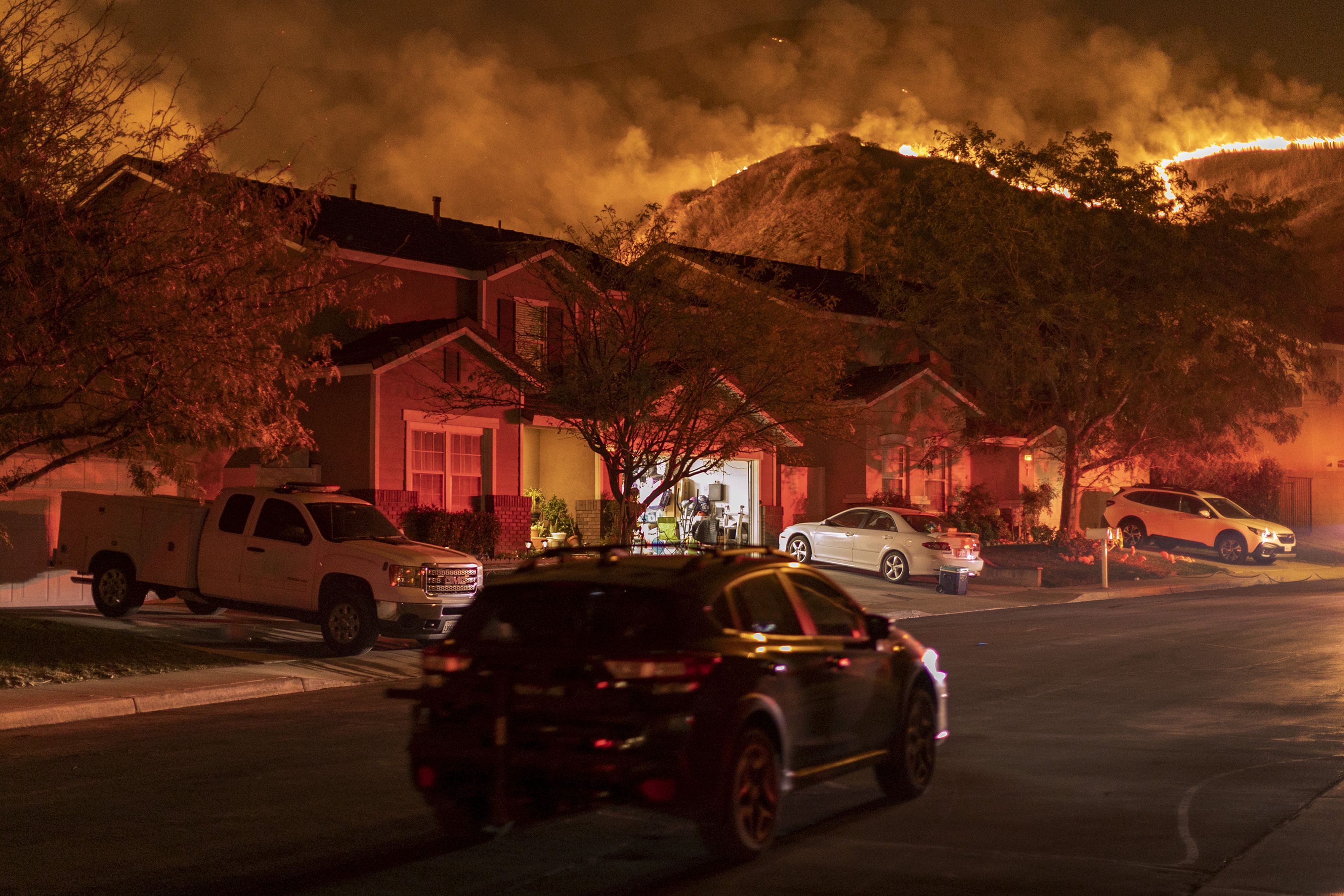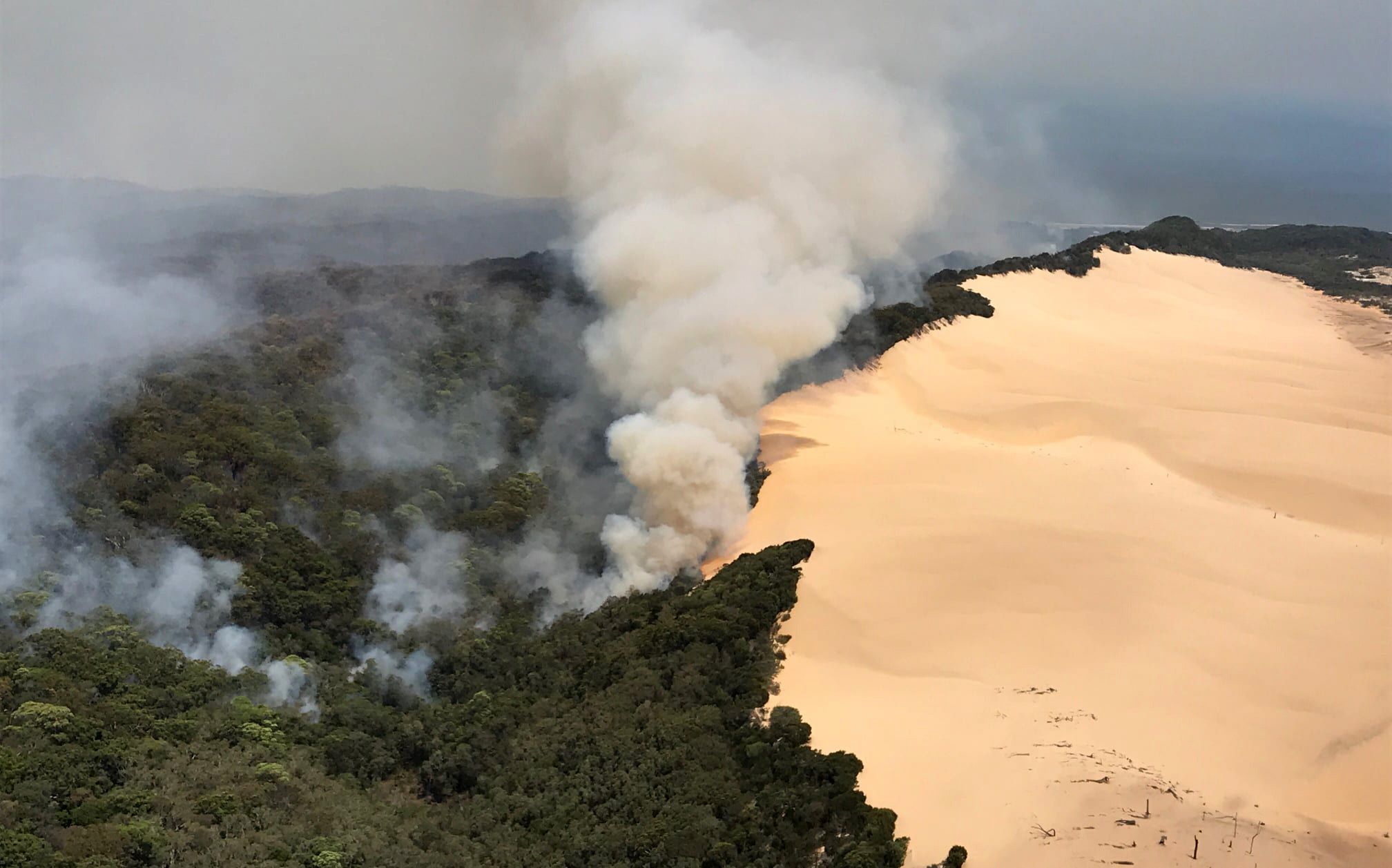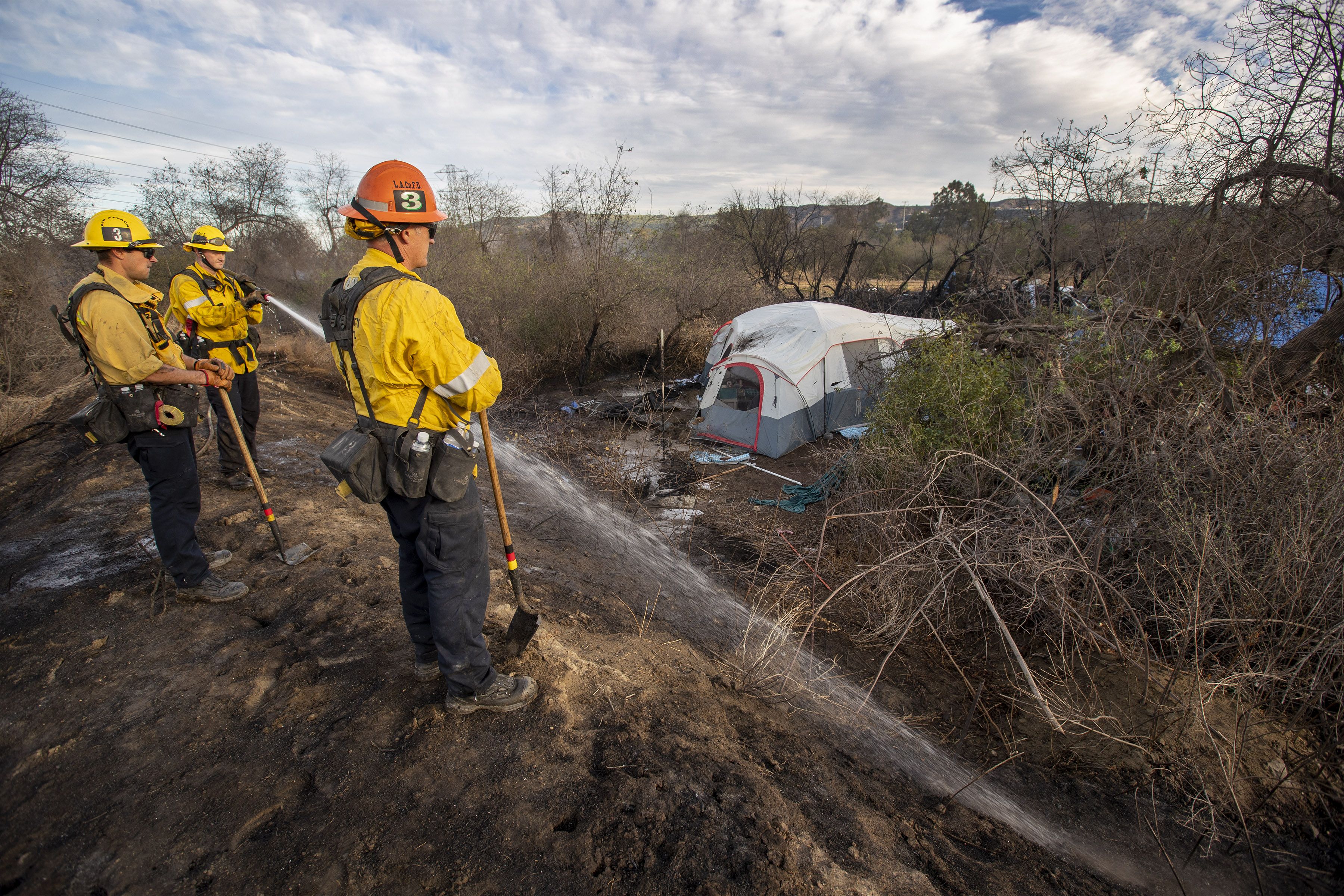A firefighter at a wildfire in San Mateo, California, Aug. 19. Nearly 4.2 million acres has burned in the state this year — the most on record, per Cal Fire. Wildfires have killed 31 people and razed over 10,400 structures in the state in 2020. Photo: Liu Guanguan/China News Service via Getty Images
2020 has been an extraordinary year for wildfires on the U.S. West Coast and around the world, but you should expect more of the same this decade and in years to come.
For the record: That's the assessment of University of California, Los Angeles, climate scientist Daniel Swain, who says we need to learn to live with fire better by embracing good management practices, including traditional indigenous management.
"2020 seemed like a very extreme year and, indeed, it was from a fire perspective relative to historical fire patterns in a lot of these regions. But I suspect that 2020 in retrospect will not have been very extraordinary when we look at fire conditions over the next 20 or 30 years to come."
Snapshot: 57,480 wildfires have burned nearly 10.4 million acres across the U.S. this year, National Interagency Fire Center data published Monday shows.
- The Copernicus Atmosphere Monitoring Service (CAMS) 2020 report shows wildfires in California, Colorado, Oregon and Washington state were "tens to hundreds of times higher than the 2003–2019 average for the country as a whole and for affected states."
- The toll from the fires is "188 lives lost and $46.6 billion dollars and counting," Climate Central notes.
In Australia, the "black summer" bushfires of 2019-2020 killed 33 people and impacted 3 billion animals as flames destroyed some 59 million acres.
In Brazil's Amazon rainforest, wildfires rose 13% in the first nine months of 2020 and satellites detected a 61% increase in September compared to 2019, as deforestation reached a 12-year high amid drought conditions.
In the Arctic, fires "released a record amount of carbon dioxide this year, increasing by more than a third on last year to 244 megatonnes," per CAMS.
Driving the news: A warming climate is amplifying fire risk in places where this was "pretty high to begin with — that’s certainly the case in Australia and California," Swain notes. The warming is drying increasing amounts of moisture out of the soil, consequently, plants.
- "It has gotten a lot hotter, and in both Australia, California, the Amazon and the Arctic in 2020 we saw all-time high record temperatures during the peak of fire season," Swain said.
- "Climate change is shifting the climate to an even greater degree in some places that historically were somewhat immune from fire because they were either too cold or too moist. Increasingly, that's no longer the case."
Yes, but: Not every year is expected to be as bad as this year, but on average, more wildfires are expected due to Earth's warming, per Swain.
- "Do I think that we might see years like this several times per decade, in just 20 years? Unfortunately, yes," he said.
Be smart: Climate change is a global problem that no nation can fix alone, but the wildfire crisis can be addressed locally if people learn to live with fires by embracing managed fire, such as traditional indigenous practices,Swain said.
- Another important factor is designing buildings to be more fire resilient, with evacuation egress, or having essentially buffer zones, public parks, open spaces or irrigated spaces that help slow down an oncoming fire.
The bottom line: Per Swain, "The explosion in fire catastrophes that we've seen in recent years is not inevitable."
In photos: 2020 fires around the world
Go deeper: The "war on nature"
Source: Read Full Article
